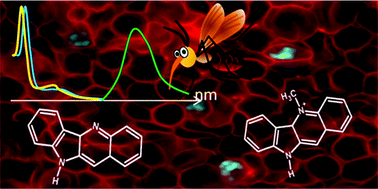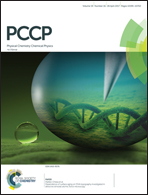Cryptolepine and quindoline: understanding their photophysics†
Abstract
Quindoline (QUIND, indolo[3,2-b]quinoline) and cryptolepine (CRYPT, 5-methyl-10H-indolo[3,2-b]quinoline) together with their corresponding derivatives have been studied for decades due to their important biological activity against diseases like malaria. The biological activity of drugs is routinely investigated using fluorescence based methods. However, recent reports show that the photophysics of CRYPT and its analogues is not yet understood. Herein, the photophysics of CRYPT and QUIND is studied in aqueous solutions at different pH values and in both protic and aprotic solvents of different polarities. CRYPT and QUIND are shown to exist in different prototropic forms depending on pH and solvent polarity. CRYPT is found to be more sensitive to the solvent nature. Both compounds are shown to have two-photon stimulated emission. Their two-photon absorption (TPA) cross-sections were measured in the 710–960 nm range. The TPA cross-section is relatively low but allows for the observation of both compounds in HEK 293 T cells, where CRYPT is found mostly in the nucleus and QUIND accumulates in the cytoplasm.



 Please wait while we load your content...
Please wait while we load your content...